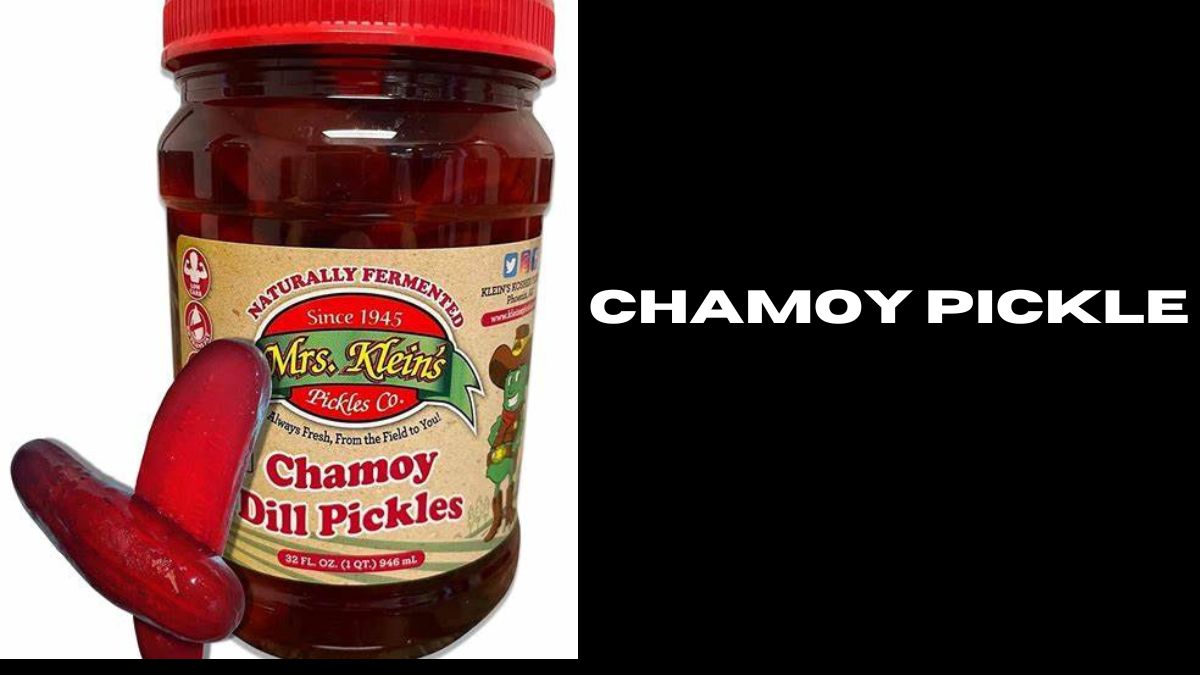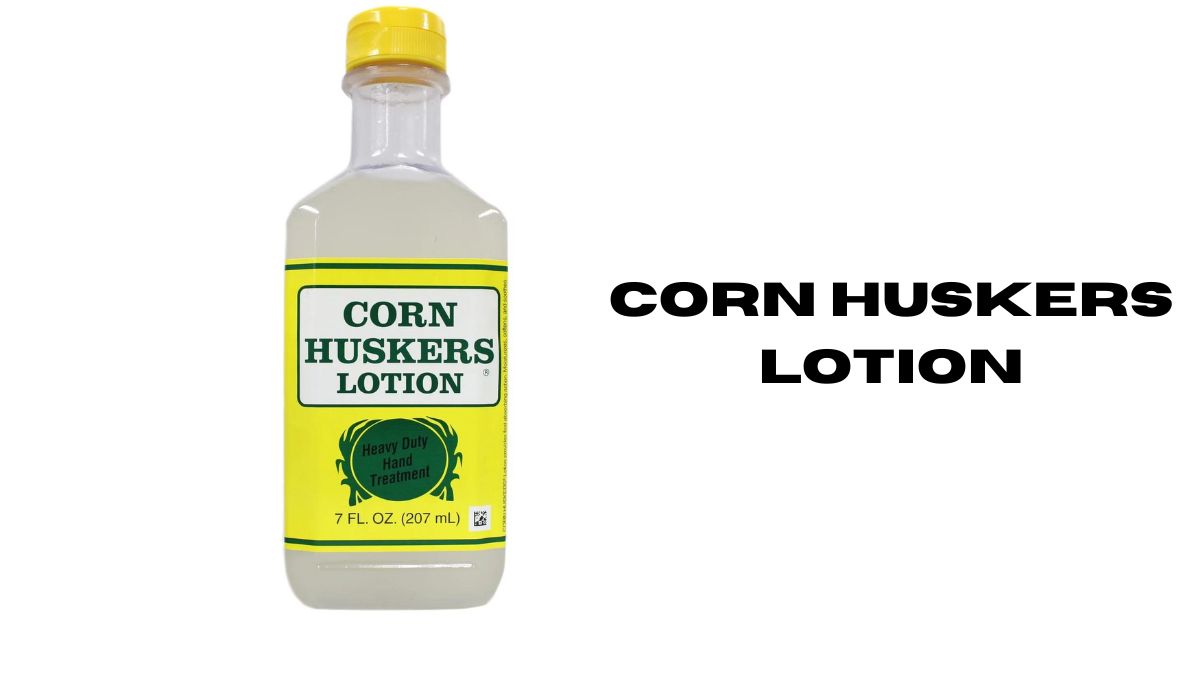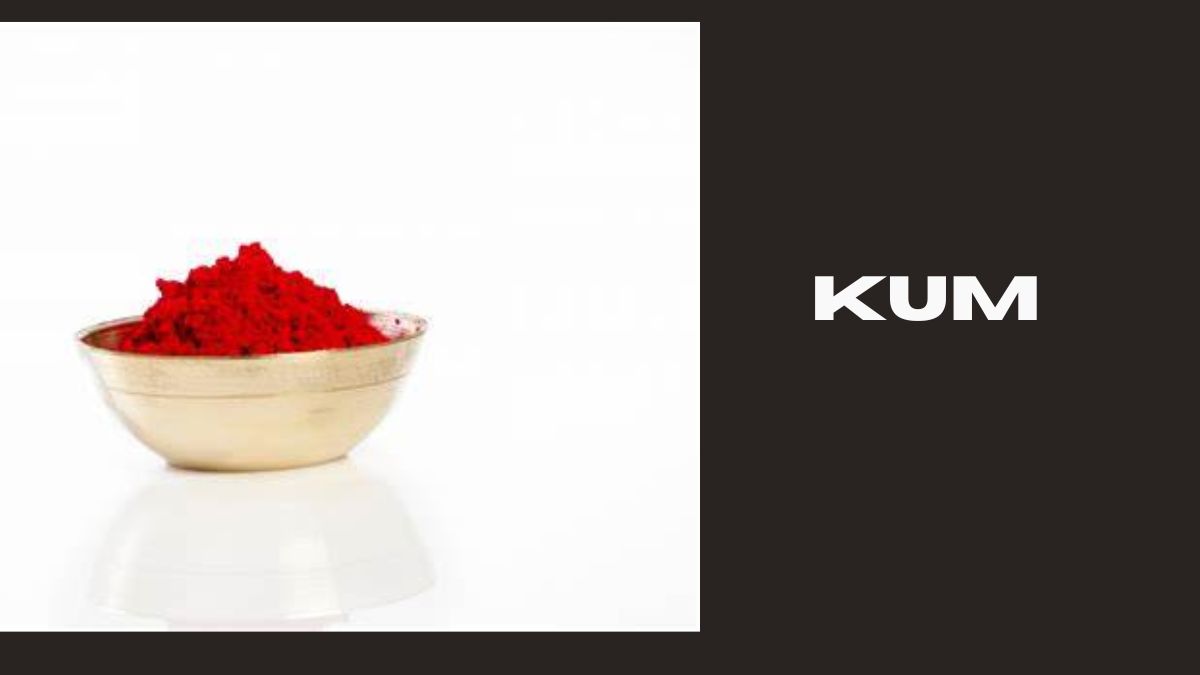Health
Introduction to Chamoy Pickle

Chamoy pickle, a flavorful and tangy condiment, has been gaining popularity in recent years, captivating taste buds with its unique blend of sweet, sour, salty, and spicy flavors. This article explores the origins, preparation, uses, and cultural significance of chamoy pickle, shedding light on its journey from a traditional Mexican sauce to a global culinary sensation.
What is Chamoy?
Chamoy is a Mexican condiment with a long history, dating back to pre-Columbian times. It is typically made from a combination of pickled fruit, chili peppers, lime juice, and spices, resulting in a versatile sauce that adds a burst of flavor to various dishes.
Common Ingredients
The key ingredients in chamoy include fruits like apricots, plums, or mangoes, which are pickled in a brine solution along with chili peppers, vinegar, and spices. This unique blend creates a complex flavor profile that balances sweetness, tanginess, and heat.
The Origin Story of Chamoy Pickle
Chamoy’s roots can be traced back to indigenous communities in Mexico, where it was used both as a condiment and a medicinal remedy. Over the centuries, it evolved into the versatile sauce we know today, with each region adding its own twist to the recipe.
Cultural Significance
In Mexican culture, chamoy holds a special place, often used to enhance the flavor of fruits, snacks, and beverages. It is also associated with celebrations and festivals, where it is served alongside traditional dishes.
How is Chamoy Pickle Made?
To make chamoy pickle, fruits are first pickled in a brine solution with chili peppers, vinegar, and spices. The mixture is then blended into a smooth sauce, with optional additions like sugar or tamarind paste to balance the flavors.
Variations and Regional Differences
While the basic recipe remains consistent, there are countless variations of chamoy pickle across Mexico and beyond. Some regions may use different fruits or spices, resulting in unique flavor profiles that reflect local culinary traditions.
Popular Uses of Chamoy Pickle
Chamoy pickle is incredibly versatile and can be used in a variety of ways. It adds a zesty kick to fresh fruits, enhances the flavor of savory snacks like chips or tacos, and even makes a delicious topping for ice cream or cocktails.
Traditional and Modern Recipes
From classic street foods like mangonadas (mango slushies) to innovative dishes like chamoy-glazed ribs, there are endless ways to incorporate chamoy pickle into your cooking. Its bold flavors and vibrant color make it a favorite among chefs and home cooks alike.
Health Benefits and Concerns
While chamoy pickle is undeniably delicious, it’s important to consume it in moderation due to its high sugar and salt content. However, it does contain vitamins and antioxidants from the fruit and spices, which can have some health benefits when enjoyed as part of a balanced diet.
Potential Drawbacks or Allergens
Some commercial chamoy pickles may contain additives or preservatives, so it’s essential to read the label carefully, especially if you have allergies or dietary restrictions. Additionally, the spicy nature of chamoy can be irritating for some individuals, particularly those with sensitive stomachs.
Chamoy Pickle in Popular Culture
Chamoy has been featured in various movies, TV shows, and music videos, further cementing its status as a cultural icon. Its bold flavors and vibrant color make it a visually striking addition to any culinary scene.
Influence on Food Trends
In recent years, chamoy pickle has experienced a surge in popularity, thanks in part to social media influencers and food bloggers who have helped spread the word about its unique flavor profile. It has become a trendy ingredient in cocktails, desserts, and even skincare products.
DIY Chamoy Pickle Recipe
Want to try making chamoy pickle at home? Here’s a simple recipe to get you started:
- Gather your ingredients, including your choice of fruit, chili peppers, vinegar, and spices.
- Prepare the fruit by washing and cutting it into small pieces.
- In a large jar, combine the fruit with chili peppers, vinegar, and spices.
- Allow the mixture to marinate for at least 24 hours, allowing the flavors to meld together.
- Once the fruit is pickled, blend the mixture until smooth, adjusting the seasoning to taste.
- Transfer the chamoy pickle to a clean jar and store it in the refrigerator for up to two weeks.
Tips and Tricks for Customization
Feel free to experiment with different fruits, spices, and levels of heat to create your perfect batch of chamoy pickle. You can also adjust the sweetness by adding more or less sugar to suit your taste preferences.
Where to Find Chamoy Pickle
Chamoy pickle can often be found in Mexican grocery stores or specialty food markets. Either in the form of bottled sauces or dried fruit snacks. You can also find it online through various retailers who specialize in Latin American cuisine.
Online Purchasing Options
For those who prefer the convenience of shopping from home, there are plenty of online stores that offer a wide selection of chamoy pickle products, from traditional recipes to gourmet variations.
Chamoy Pickle: A Global Phenomenon
While chamoy pickle has its roots in Mexican cuisine. It has gained a following around the world, appealing to food enthusiasts of all backgrounds. Its bold flavors and versatile uses make it a favorite condiment in diverse culinary traditions.
Chamoy Pickle vs. Other Condiments
Compared to other condiments like salsa or hot sauce. Chamoy pickle offers a unique combination of sweet, sour, and spicy flavors that set it apart. It pairs well with a wide range of dishes, from savory snacks to refreshing desserts.
Market Competition
As chamoy pickle continues to gain popularity, more companies are jumping on the bandwagon. Offering their own versions of this beloved condiment. While competition is fierce, many consumers remain loyal to traditional recipes and brands they trust.
Challenges in Producing Chamoy‘s Pickle
One of the biggest challenges in making chamoy pickle is sourcing high-quality ingredients, particularly fresh fruit and authentic chili peppers. Farmers and producers must work together to ensure a steady supply of ingredients that meet quality standards.
Maintaining Authenticity
As chamoy’s pickle becomes more commercialized, there is a risk of losing the authenticity and cultural heritage that make it special. It’s essential for producers to stay true to traditional recipes and production methods while also adapting to modern tastes and trends.
Sustainability and Ethical Considerations
The cultivation of fruits and chili peppers for chamoy’s pickle production can have environmental consequences, such as deforestation or habitat loss. It’s crucial for producers to prioritize sustainable farming practices and minimize their ecological footprint.
Fair Trade Practices
Supporting fair trade initiatives ensures that farmers and workers receive fair wages and working conditions. By choosing ethically sourced chamoy pickle products, consumers can make a positive impact on the lives of those involved in its production.
Future Trends in Chamoy’s Pickle Consumption
As consumer tastes evolve, we can expect to see new flavors and variations of chamoy’s pickle hitting the market, catering to a diverse range of palates. Additionally, innovative packaging solutions will make it easier for consumers to enjoy chamoy’s pickle on the go.
Potential Growth in the Market
With its growing popularity worldwide, the future looks bright for chamoy pickles. As more people discover its delicious flavor and versatility, demand is likely to continue rising, leading to new opportunities for producers and retailers alike.
Conclusion
Chamoy’s pickle is a truly unique condiment that has captivated taste buds around the world with its bold flavors and cultural significance. Whether enjoyed on its own or as an ingredient in a delicious recipe. Chamoy’s pickle adds a flavorful kick to any dish. As its popularity continues to grow, we can look forward to seeing new innovations and trends emerge in the world of chamoy’s pickle.

Health
An Ultimate Guide to Corn Huskers Lotion

Corn Huskers Lotion is a renowned skincare product cherished for its exceptional moisturizing properties. Developed over a century ago, this lotion has stood the test of time, becoming a household name in skincare routines worldwide.
What is Corn Huskers Lotion?
Corn Huskers Lotion is a unique moisturizer designed to relieve dry, rough skin. Its lightweight formula penetrates deep into the skin, leaving it soft and smooth without a greasy residue.
Origins and History
Initially created for farmers to soothe their hands after a day’s work in the cornfields, Corn Huskers Lotion has evolved into a beloved skincare staple for people of all walks of life.
Benefits of Corn Huskers Lotion
- Intense hydration
- Quick absorption
- Non-greasy formula
- Versatile use on various body parts
Ingredients of Corn Huskers Lotion
Glycerin
Glycerin acts as a humectant, attracting moisture to the skin and locking it in, thus preventing dryness and dehydration.
Water
Water serves as a solvent for other ingredients and aids in the hydration process.
Sodium Borate
Sodium Borate, also known as borax, functions as a buffering agent and a mild antiseptic.
Fragrance
Corn Huskers Lotion features a subtle fragrance that enhances the overall sensory experience without overpowering.
Other Ingredients
Additional ingredients may include mineral oil and parabens, among others, to preserve the product and enhance its efficacy.
How to Use Corn Husker Lotion
Applying Corn Husker Lotion
Simply dispense a small amount of lotion onto your hands and massage it into the skin until fully absorbed. Repeat as needed throughout the day.
Frequency of Use
For optimal results, use Corn Husker Lotion daily, especially after washing your hands or taking a shower.
Tips for Maximum Effectiveness
- Apply generously to areas prone to dryness, such as elbows, knees, and heels.
- Use before bedtime to wake up with soft, supple skin.
Comparing Corn Husker Lotion with Other Moisturizers
Moisturizing Properties
Corn Husker Lotion boasts superior moisturizing properties compared to many other moisturizers on the market, making it ideal for combating severe dryness.
Texture and Absorption
Its lightweight, non-greasy formula sets it apart from thicker, heavier creams, allowing for quick absorption without leaving a residue.
Price Point
Corn Husker Lotion offers exceptional value for its effectiveness, often costing less than premium skincare brands while delivering comparable results.
Who Should Use Corn Husker Lotion?
Target Audience
Corn Husker Lotion caters to individuals seeking relief from dry, rough skin, regardless of age or gender.
Skin Types
While suitable for most skin types, those with excessively oily or acne-prone skin may find the lotion too rich for their needs.
Potential Side Effects and Precautions
Allergic Reactions
Some individuals may experience allergic reactions to certain ingredients in Corn Husker Lotion. It is advisable to perform a patch test before widespread use.
Precautions for Sensitive Skin
Individuals with sensitive skin should exercise caution when using Corn Husker Lotion, as certain ingredients may cause irritation or redness.
Health
Kum: The Unsung Hero of Nutritious Fruits

Kum, a lesser-known fruit with immense nutritional value, holds a significant place in various cultures around the world. Despite its obscurity, kum has been cultivated for centuries and continues to be cherished for its health benefits and culinary versatility.
Introduction to Kums
Kums, scientifically known as Citrus japonica, is a small citrus fruit native to East Asia. It is also referred to as kumquat or cumquat. The name “kumquat” is derived from the Cantonese words “gam” (golden) and “gwat” (orange). This petite fruit packs a punch of flavor and nutrients, making it a valuable addition to any diet.
Geographical Distribution
Kums trees thrive in temperate and subtropical regions, particularly in China, Japan, and Southeast Asia. They prefer well-drained, sandy soil and plenty of sunlight to flourish. However, with the right care, kum trees can also be grown in other parts of the world.
Cultivation of Kums
Cultivating kum requires attention to detail, from selecting the right location to nurturing young trees. Kum trees can be propagated from seeds or cuttings, with the latter being more common for commercial cultivation. Once planted, they require regular watering and fertilization to promote healthy growth.
Harvesting Kum
Kum fruits typically ripen in late fall or early winter, depending on the climate. Signs of ripeness include vibrant orange color and a slight softness when gently squeezed. Harvesting kums is usually done by hand, ensuring that only fully ripe fruits are picked to maximize flavor and quality.
Nutritional Benefits of Kums
Despite their small size, kumquats are packed with essential nutrients such as vitamin C, fiber, and antioxidants. Consuming kum regularly can boost immunity, aid digestion, and promote overall health.
Culinary Uses of Kum
Kumquats can be enjoyed in various ways, from eating them fresh to incorporating them into savory and sweet dishes. They add a tangy flavor and a pop of color to salads, sauces, and desserts, making them a favorite among chefs and home cooks alike.
Kums in Traditional Medicine
In traditional Chinese medicine, kum is believed to have medicinal properties and is used to treat ailments such as coughs, sore throats, and indigestion. Modern research has also shown promising results regarding the potential health benefits of kum, including its anti-inflammatory and antioxidant properties.
Kum in Popular Culture
Kum has often been used as a symbol of prosperity and good fortune in literature and art. Its bright color and unique flavor make it a popular motif in traditional Chinese New Year decorations and festivities.
Economic Importance of Kums
While kums is not as widely cultivated as other citrus fruits, its economic importance cannot be overlooked. In regions where it is grown commercially, kum cultivation provides employment opportunities and contributes to the local economy through exports and trade.
Environmental Impact
Like all agricultural practices, kums cultivation can have both positive and negative effects on the environment. Implementing sustainable farming practices such as organic farming and water conservation can help minimize the environmental impact of kum cultivation and ensure its long-term viability.
Challenges and Future Prospects
Despite its many benefits, kums cultivation faces challenges such as pests, diseases, and climate change. However, ongoing research and development efforts aim to address these issues and ensure the continued growth and prosperity of the kum industry.
Conclusion
Kums is a remarkable fruit with a rich history and a promising future. Its nutritional benefits, culinary versatility, and cultural significance make it a valuable addition to any diet and an essential part of our agricultural heritage.
Health
What is Commonly Misdiagnosed as Pink Eye?

Pink eye, also known as conjunctivitis, is “What is Commonly Misdiagnosed as Pink Eye” characterized by inflammation of the conjunctiva, the thin layer that covers the white part of the eye and lines the inner surface of the eyelid. While pink eye is often straightforward to diagnose. There are several other conditions that share similar symptoms, leading to misdiagnosis and improper treatment.
Understanding Pink Eye
Pink eye can be caused by various factors, including viruses, bacteria, allergens, and irritants. The symptoms typically include redness, itching, tearing, and discharge from the eye. In some cases, pink eye may also cause blurred vision and light sensitivity.
Common Misdiagnoses
- Allergies: Allergic conjunctivitis can mimic the symptoms of pink eye, with redness, itching, and tearing being prominent. However, the underlying cause is different, as allergic reactions stem from exposure to allergens such as pollen, pet dander, or dust mites.
- Bacterial Infection: Bacterial conjunctivitis shares many symptoms with pink eye, including redness and discharge from the eye. However, bacterial infections are often characterized by thicker, yellow or green discharge, whereas viral conjunctivitis tends to produce a more watery discharge.
- Viral Infection: Viral conjunctivitis, commonly referred to as “pink eye,” is often mistaken for bacterial conjunctivitis due to similar symptoms. However, viral infections are typically associated with a clear, watery discharge and may be accompanied by symptoms of a cold or upper respiratory infection.
- Contact Lens Irritation: Individuals who wear contact lenses may experience irritation or redness in the eyes, which can be mistaken for pink eye. Contact lens-related irritation can result from improper lens care, overuse, or sensitivity to lens materials.
Distinguishing Pink Eye from Misdiagnoses
Accurate diagnosis is essential for appropriate treatment. Healthcare providers may perform various tests to differentiate between pink eye and other conditions:
- Allergy Tests: Allergy testing can help identify specific allergens triggering allergic conjunctivitis.
- Bacterial Culture: A bacterial culture may be performed on eye discharge to determine if bacterial infection is present.
- Viral Testing: Polymerase chain reaction (PCR) tests can detect viral pathogens responsible for viral conjunctivitis.
- Eye Examination: A comprehensive eye examination, including visual acuity testing and examination of the conjunctiva, can aid in diagnosis.
Treatment for Pink Eye and Misdiagnoses
Treatment for pink eye depends on the underlying cause:
- Pink Eye Treatment: Treatment may include topical antibiotics for bacterial conjunctivitis, antiviral medications for viral conjunctivitis, or antihistamines for allergic conjunctivitis.
- Misdiagnosis Treatments: Misdiagnosed conditions such as allergies or contact lens irritation may require specific treatments. Including allergy medications, eye drops, or adjustments to contact lens wear.
Prevention
Practicing good hygiene and avoiding allergens can help prevent pink eye and misdiagnosed conditions:
- Hygiene Practices: Wash hands frequently, avoid touching the eyes, and disinfect shared items such as towels and pillows.
- Avoiding Allergens: Minimize exposure to known allergens by keeping windows closed during high pollen seasons, using air purifiers, and avoiding contact with pets if allergic.
Conclusion
While pink eye is a common eye condition, it is essential to consider other potential causes of similar symptoms to avoid misdiagnosis and ensure appropriate treatment. By understanding the differences between pink eye and other conditions. Healthcare providers can make accurate diagnoses and provide effective treatment options.
-

 Technology10 months ago
Technology10 months agoWhat is a Network Termination Unit (NTU)?
-

 General9 months ago
General9 months agoIntroduction to the Concept of a Favorite Daughter
-

 Travel10 months ago
Travel10 months agoExploring the Wonders of myfavouriteplaces.org:// blog
-

 Technology7 months ago
Technology7 months ago.vid Format: Maximizing Video Content Impact
-

 Celebrity10 months ago
Celebrity10 months agoMatthew Mcconaughey Net Worth
-

 Technology10 months ago
Technology10 months agoInstagram Stories No Sound: Unveiling the Silence Dilemma
-

 News8 months ago
News8 months agoNokia Lumia 1320 now available from Cricket Wireless for $229 after rebate
-

 Technology7 months ago
Technology7 months agoAmazon GPT-55X: Revolutionizing AI-Powered Solutions